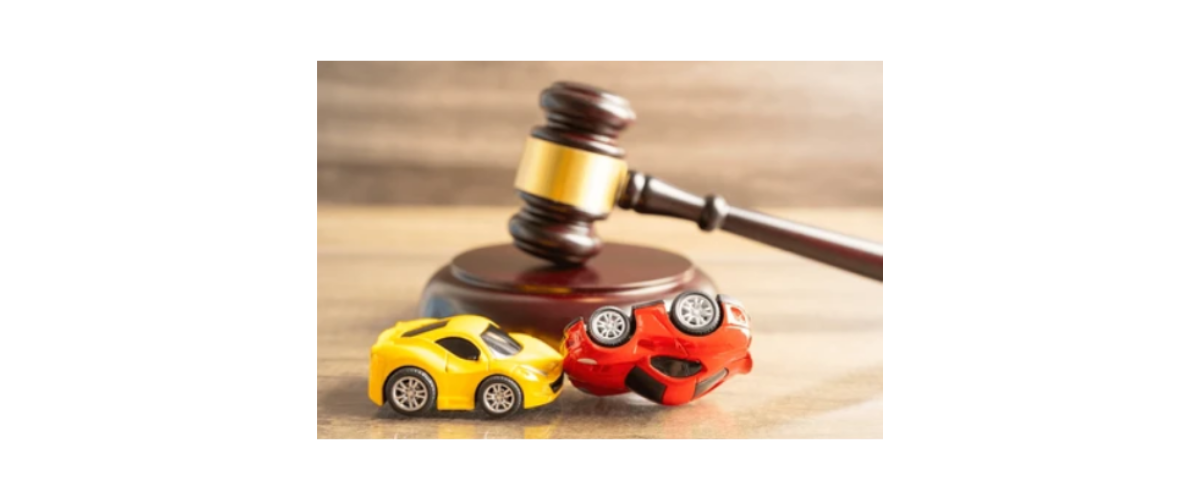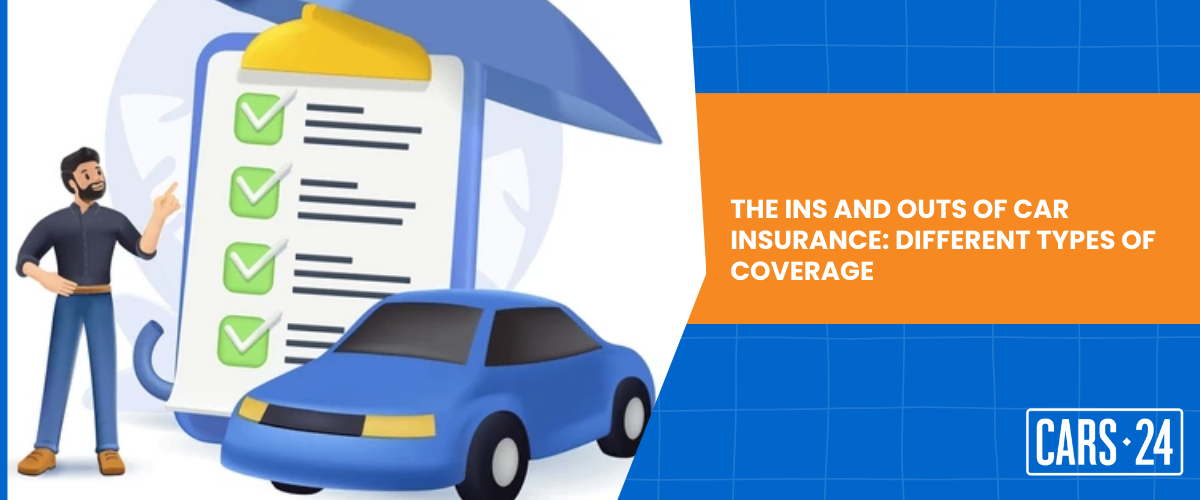Are you confused by the plethora of car insurance options available? Heavy insurance jargons leave you scratching your head? If so, you’re not alone. Understanding the different types of coverage can be a daunting task for many. But weve got you covered!
From basic insurance to the more comprehensive policies that provide greater protection, we’ll break down each type of coverage and explain how they work. By the end of this article, you’ll have a clear understanding of which types of coverage are most suitable for your needs and how to make an informed decision when it comes to purchasing car insurance.
Comprehensive Car Insurance:
Comprehensive car insurance is a type of policy that provides coverage for a wide range of events and incidents that may result in damage to your vehicle. This type of insurance can help you minimise out-of-pocket expenses if something happens to your car.
Compared to third-party car insurance and other types of policies, comprehensive car insurance is considered the top level of coverage. As a result, it generally comes with a higher premium. However, the higher price tag also comes with a wider range of benefits. In addition to the coverage provided by lower types of car insurance, comprehensive policies often include protection against accidental damage and hail damage. Some comprehensive policies even offer additional benefits that can be purchased to extend your coverage.
If you own a luxury vehicle, an older classic car, or a collectible car, it is advisable to consider a comprehensive insurance policy. Some comprehensive policies provide coverage for an agreed value, ensuring that your vehicle is insured for its true worth in the event of an accident. While not all insurers offer coverage for rare vehicles, comprehensive insurance is generally the option that provides the most extensive coverage in case of damage.
Here, are a few things that are covered in:
- Accidents: Covers damage to your car, other cars, and property (even if the accident is your fault).
- Theft and vandalism: Covers your car if it’s stolen, vandalised, or damaged during a theft attempt.
- Fire, storm and flood: Covers damage to your car caused by severe weather conditions.
- Hire a car after an accident or theft: Provides a hire car if your car is stolen or undrivable after an accident that’s not your fault.
- Towing: Pays for towing your car to a repairer or safe place if it can’t be driven after a covered event.
- New replacement car: If your new car is written off within the first two years, it is replaced with a similar new car (subject to some deductibles).
- Emergency repairs: Pays for repairs needed after a covered event to make your car secure and safe to drive (typically up to $800).
- Personal items: Covers personal items in your car if they’re stolen or damaged in an accident (typically up to $500).
- Baby seats: Covers baby capsules and baby seats if they’re stolen or damaged in an accident (typically up to $500).
- Tools of trade: Covers your work tools if they’re stolen from your car or locked toolbox (up to $1,500).
- Ridesharing: Covers you if you drive your car for a ridesharing service like Uber occasionally (at specific premium).
- Automatic coverage for extras: Spoilers, alloy wheels, tow bars, and other extras and mods are covered at no extra cost.
- Accessibility modifications: Covers modifications to your car such as hoists, hand controls, and wheelchair ramps. Coverage is limited to the agreed value on agreed-value policies. Contact us to include accessibility modifications in your quote.
Please note that the figures presented above are general estimates and may vary depending on the specific insurance policy you choose. The coverage and the corresponding figures can differ based on the terms and conditions of your selected insurance plan.
Third-Party Fire and Theft:
Third-Party Fire and Theft (TPFT) insurance provides coverage for any liability you may have for the damage your vehicle causes to other people’s property and vehicles. It also offers protection for your car in the event of theft, attempted theft, or if it is destroyed by fire. Depending on your specific policy and insurance provider, you may also be eligible for a hire car at no additional cost if your vehicle is stolen. With Third Party Fire and Theft car insurance, you can rest assured knowing that any damage caused to other people’s property will be covered, as well as any damage to your vehicle resulting from fire or theft.
It’s important to note that Third Party Fire and Theft insurance does not cover accidental damage to your car, which is typically covered under comprehensive car insurance. However, it does provide more coverage compared to Third Party Property Damage car insurance.
Third-Party Property Damage:

Third-Party Property Damage (TPPD) refers to the most basic form of car insurance that provides coverage for any damage caused by you to other vehicles and property. However, it does not provide coverage for any damages or losses incurred by your vehicle, except in specific circumstances, such as accidents caused by uninsured drivers.
- What exactly is Third Party Property Damage car insurance? Third-Party Property Damage car insurance is a specific type of insurance product that offers coverage if you are held responsible for a car accident that results in damage to someone else’s property. This type of insurance offers a lower level of coverage and is generally more affordable compared to other options like Third Party Fire and Theft or comprehensive car insurance.
- What does it cover? Third Party Property Damage insurance covers the expenses and damages incurred by other individuals’ vehicles and property for which you are held accountable. It includes the associated legal liability as well. However, it typically does not cover any damages caused to your vehicle, whether it is due to your actions or the actions of other drivers.
In some cases, certain Third Party Property Damage insurance providers may offer limited coverage for your vehicle if it sustains damage in an accident where an uninsured vehicle is involved.
To determine if you have any additional limited protections under the terms of your policy, it is crucial to review the relevant provisions within your coverage.
Compulsory third-Party (CTP) insurance:
Compulsory Third Party (CTP) insurance is designed to cover the expenses associated with injuries or fatalities resulting from a car accident where you are at fault. This type of insurance is mandatory for all vehicles in Australia and is typically included as part of your registration. However, in New South Wales (NSW), it is purchased separately and referred to as Green Slip insurance.
In certain states like Queensland (QLD), NSW, the Australian Capital Territory (ACT), and South Australia (SA), drivers have the option to choose their CTP insurer when paying for their registration. Conversely, in other areas such as the Northern Territory (NT), there is only one available option.
In most states, CTP insurance is automatically included in the registration fees, alleviating the need for additional concerns. However, if you reside in QLD, ACT, or NSW, you have the flexibility to select your CTP insurance provider.
| Type of Insurance | Comprehensive Insurance | Third-Party, Fire & Theft Insurance | Third-Party Property Insurance | Compulsory Third Party Insurance |
|---|---|---|---|---|
| Injuries or death of someone else | x | x | x | ✓ |
| Damage to other peoples property | ✓ | ✓ | ✓ | x |
| Damage or loss of your car caused by theft or fire | ✓ | ✓ | x | x |
| Damage to your car from a traffic accident | ✓ | x | x | x |
Conclusion
Car insurance plays a vital role in responsible car ownership by providing different levels of protection tailored to individual requirements. Comprehensive insurance offers the highest level of coverage, safeguarding against various incidents such as accidents, theft, and natural disasters. Third-party fire and Theft insurance provides coverage for damage caused by your vehicle to other people’s property, as well as protection against theft and fire. Third-party property Damage insurance is a basic form of coverage, only insuring against damage caused by your vehicle to other vehicles and property. Lastly, Compulsory Third Party (CTP) insurance is a legal requirement throughout Australia, covering injuries or deaths resulting from accidents where you are at fault. Familiarising yourself with these insurance types will enable you to make an educated decision when selecting the appropriate coverage for your specific needs.
FAQs
1. What are the primary categories of car insurance coverage?
The main types of car insurance coverage include:
- Compulsory Third Party (CTP) Insurance.
- Third-Party Liability Insurance.
- Fire, Theft, and Third-Party Liability Insurance.
- Comprehensive Insurance.
2. What is the most comprehensive type of car insurance?
A Comprehensive Car Insurance Policy offers the highest level of protection, covering both third-party liabilities and damages to your vehicle. Additionally, in the unfortunate event of your death resulting from an accident, your family members are eligible to receive benefits.
3. Which car insurance policy provides the most extensive coverage?
A Comprehensive Car Insurance Policy offers the highest level of protection, covering both third-party liabilities and damages to your vehicle. Additionally, in the unfortunate event of your death resulting from an accident, your family members are eligible to receive benefits.

Comments
New Comment